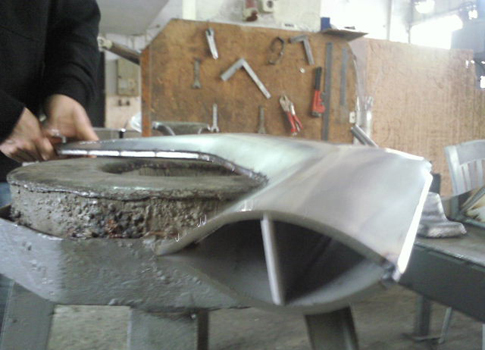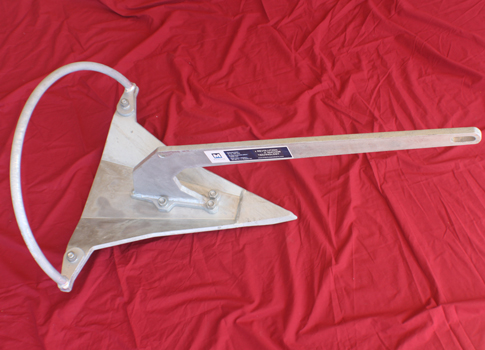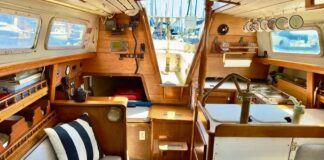Jonathan Neeves

In case you hadnt noticed, were bending anchors here at Practical Sailor. Look for Part 2 of our anchor shank-bending adventures in the upcoming May issue. Coincidentally, right when we were in the middle of bending anchor shanks, we received a 33-pound Mantus anchor for testing. The design is interesting in that it combines some attributes of a Rocna, Manson Supreme, and Wasi Bugel. The anchor has a folded fluke with a small, sharpened toe welded to the fluke. The anchor is shallowly concave but has a roll bar that is sufficiently wider than the fluke.
Here’s a summary of our tester’s report so far:
“The anchor is unusual in that the fluke and shank are not welded, but bolted together with high-tensile bolts (making it easier to ship and store.) One of the first things we noticed was that the shank dimensions were smaller than the equivalently sized Right Anchor, Excel, or Rocna. The shank thickness (about 1/2-inch) and length are similar to the 33-pound (15-kilogram) Rocna or Right Anchor Excel-but the 2.4-inch-wide Mantus shank is 60-percent narrower.

“Looking only at shank strength, this implies that the Mantus shank will be noticeably weaker than the Excel or Rocna. Both of these anchors use higher-tensile steel (ASTM 514) in their anchor shanks; the material held up very well in our testing. Given the smaller size of the shank, we were curious about the grade of steel Mantus is using. Mantus makes no claims on the quality of its shank; it advertises simply that it is formed out of high-quality steel plate.’ The manufacturer gladly provided the information to us, saying it uses A36 mild steel in the shank. The company does imply that its anchor is as good or better than its peers such as the Manson Supreme or Rocna.
“Before hiring a metallurgist to further analyze the metal, we tested it using our quick and dirty ball bearing test, in which a super-hard bearing or bolt is clamped between the anchor shank (cleaned of any galvanizing) and a plate metal of known tensile strength. The metal that dings first is the softer metal, and, although this is not a universal rule, in the world of galvanized steel anchors, the softer metal is generally the weaker metal. Comparing the Mantus to increasingly harder plates, we confirmed that the metal used in the shaft is probably a high-grade mild steel-but not near the tensile strength of that used in the Rocna or Manson Supreme.”
Certainly, setting and holding power are paramount in an anchor, and a sailor could use an anchor with a milder steel-shaft for a lifetime and never see it bend-as many makers, like Rocna, contend. Anchors from both Fortress and Spade bent in our recent tests, and these anchors have years of use to back them. However, as we will demonstrate in the May issue, bending an anchor shank made of so called high-tensile steel in real-world conditions is not as hard as one may think. Fortunately, Mantus, like many makers, offers a lifetime warranty that would likely cover a bent shank. Of course, wed prefer makers use steel with a higher yield strength in the first place. More importantly, wed like makers to be more transparent about the type and grade of material they are using in their anchors.






































